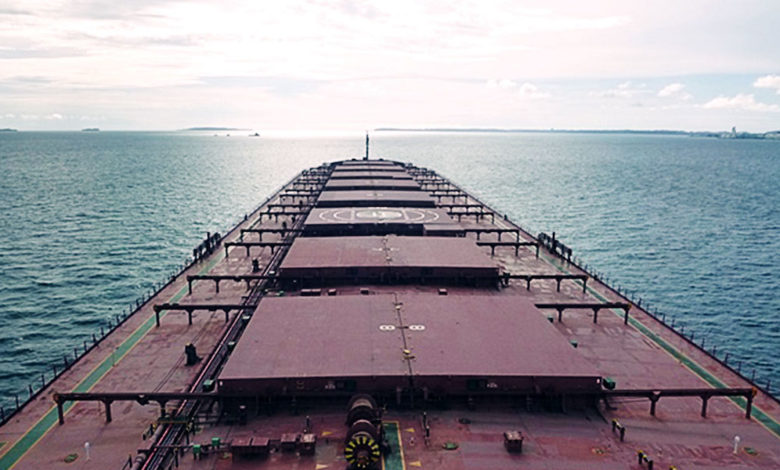Cape depression likened to 2008’s plunge

From peak to trough, the current downturn in the capesize index has been described by analysts at brokers Arrow as one of the sharpest since 2008, the year big bulkers went from six-digit territory to loss-making in the wake of the collapse of the bank, Lehman Brothers.
Arrow said the record unwind in congestion has been the key driver behind the cape collapse in recent months, adding that on the demand side, growth has been weak.
Average cape rates are stuck at under $6,000 a day, not even halfway to covering opex, having suffered an especially awful August.
“Rates overall are weak due to thinner iron ore volumes, brought on by a tough steel market backdrop,” a shipping markets report from investment bank Jefferies stated.
Looking deeper into the numbers, analysts at AXS suggested capes were still carrying plenty of volumes, but the problem was they were not being taken as far as previously.
Newbuilding deliveries continue to far outpace scrapping volume
According to AXS data, for the past five years, 74% to 77% of capesize and newcastlemax volumes were composed of iron ore with the rest mainly consisting of coal and bauxite. In contrast, iron ore accounted for only 70% of total shipments in 2022 year-to-date. Up to August 31, capesize iron ore shipments decreased by 2.3% year-on-year, et coal and bauxite surged by 7.8%.
Consequently, in terms of capesize voyage intakes, the market is far from a contraction in actual capesize shipment volumes, they have actually increased by 2.4% in the first eight months of 2022.
The issue at hand, according to AXS, is the drop in tonne-miles. As defined by AXS, the TonDay metric (see chart below) is calculated by multiplying the sailed calendar day by the intake quantity for each voyage.
Due to muted steel demand in China, iron ore exports initially intended for Chinese ports were diverted towards Southeast Asian destinations, leading to a 4.4% month-on-month or a 14.8% year-on-year contraction in AXS’s TonDay metric.
More damaging effects on freight are seen out of Brazil. TonDay numbers of Brazilian iron ore exports experienced a 21.3% year-on-year slip in August, largely caused by reduction in shipments towards Asia including China where scorching temperatures and a zero covid policy seriously took their toll last month. Brazil cut back its shipments to China from 70.7% in July to 60.6% in August and expanded sales to Arabian Gulf countries like Bahrain. This adjustment did not lower the total voyage intakes but significantly curtailed the TonDay.
In the Arrow report, which focused primarily on Brazilian iron ore exports, it also noted that the lack of growth there has been a drag on capesize tonne-miles this year. Moreover, greater VLOC fleet efficiency has also reduced the demand for spot capes.
Brazil’s iron ore exports have now contracted on a year-on-year basis during 10 of the last 12 months, and so far this year they have contracted on a year-on-year basis by 13m tons, down 6%, according to data from Commodore Research.
“Typically speaking, steel output in China tend to pick up as we approached the peak season in construction and property sales, known domestically as Golden September, Silver October. However, this time of the year, unless downstream demand displayed a solid turnaround, it is too optimistic to predict a speedy recovery in the steel industry,” the latest dry bulk report from AXS warned.
“For the balance of the year, we wouldn’t expect iron ore fundamentals to shift dramatically from the, admittedly uncertain, point they currently stand at,” a recent dry bulk report from Greece’s EastGate Research predicted.
“China’s (and the world’s) softer economic growth pace combined with manufacturing shutdowns, electricity rationing, low steel output, declining iron ore demand, easing port congestion, a deepening property crisis and energy supply challenges, are all putting together a not much appealing picture,” analysts at EastGate surmised,
Likewise, experts at Commodore saw no great reason to be bullish for the near-term for the capesize market or the overall dry bulk market in general.
“Conditions in the global economy continue to weaken, congestion at Chinese ports remains much lower than seen just a few months ago, and newbuilding deliveries continue to far outpace scrapping volume,” Commodore warned in its most recent weekly report.

